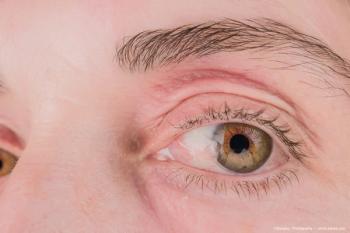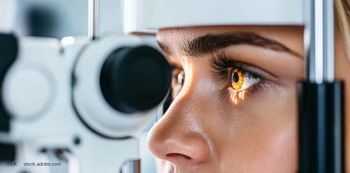
Better diagnosis, treatment options key to nonresponsive bacterial keratitis
New treatment possibilities for nonresponsive bacterial keratitis are continually in development, including molecular-targeted therapy, the cautious use of topical corticosteroids, corneal crosslinking for superficial keratitis, and biologicals, Eduardo C. Alfonso, MD, reported.
Reviewed by Eduardo C. Alfonso, MD
Take-home: An accurate diagnosis can help lead to better treatment for nonresponsive bacterial keratitis.
Nonresponsive bacterial keratitis requires an accurate diagnosis so clinicians know how to treat it.
New treatment possibilities for nonresponsive bacterial keratitis are continually in development, including molecular-targeted therapy, the cautious use of topical corticosteroids, corneal crosslinking for superficial keratitis, and biologicals, Eduardo C. Alfonso, MD, reported.
Dr. Alfonso, the Kathleen and Stanley J. Glaser Chair in Ophthalmology; professor and chairman, Department of Ophthalmology; and director, Bascom Palmer Eye Institute, University of Miami Miller School of Medicine, shared statistics regarding the public health problem associated with bacterial keratitis.
“Information from the Centers for Disease Control shows that there are 1 million for keratitis and other contact lens-related problems,” Dr. Alfonso said. “(About) 60,000 are cared for in the emergency department. This is a significant resource burden that needs to be addressed.”
Analysis of problem
An analysis of nonresponsive bacterial keratitis at Bascom Palmer between 2011 to 2015 found that 75% of cases were bacterial; 43% were gram-negative; 31% were gram-positive; and 1% were mycobacteria. The remaining 25% were nonbacterial.
“The bacterial species isolated were Pseudomonas and Staphylococcus, with a wide variety of gram-positive and negative species,” Dr. Alfonso added.
When considering why bacterial keratitis may be nonresponsive, it is important to remember that in only 50% of cases, clinicians will identify an organism, Dr. Alfonso said.
“Consider that 80% will be treated empirically without any microbiologic studies,” he said. “It’s in this group where we’ll find most cases of poorly responsive presumed bacterial keratitis.”
The continuing discoveries in the microbiome reveal that there is more to learn about bacteria and other organisms that may be nonresponsive, he added.
Treatment options
Looking at treatment, fluoroquinolones are the choice for bacterial keratitis, Dr. Alfonso said. However, aminoglycosides and fortified antibiotics also continue to play a role.
A greater number of treatment options is valuable because research done at Bascom Palmer has found that when culturing patients on prior treatment, those on monotherapy were more likely to have gram-positive and gram-negative isolates. There was a higher incidence of cultural-positive results if two or three antibiotics were used.
“There’s also a greater chance that the reason [the bacterial keratitis] didn’t respond is because it was a nonbacterial ulcer, most likely caused by fungi,” Dr. Alfonso said. “It needs to be pointed out that these are trends and are not statistically significant.”
Commonly used treatments for bacterial keratitis are not always effective, he added.
“Fluoroquinolones would not cover Staph aureus or Staph epidermis as well as gram-negative bacilli, Dr. Alfonso explained. “The aminoglycosides, like gentamycin and tobramycin, would not be adequate for Streptococcus, gram negative, or mycobacteria,”
Vancomycin is often the treatment of choice for gram positives and cases of in vitro resistance. For mycobacteria, which is not seen that often, clarithromycin and amikacin are the drugs of choice, Dr. Alfonso said.
Still, there are times in the clinical setting where a patient may still respond unexpectedly to certain antibiotics. Going forward, better identification of pathogens and newer treatment options may help patients with nonresponsive bacterial keratitis, Dr. Alfonso concluded.
Eduardo C. Alfonso, MD
This article was adapted from a presentation that Dr. Alfonso delivered at the Cornea Subspecialty Day, held prior to the 2016 American Academy of Ophthalmology meeting. Dr. Alfonso has no related financial interests.
Newsletter
Don’t miss out—get Ophthalmology Times updates on the latest clinical advancements and expert interviews, straight to your inbox.













































.png)


